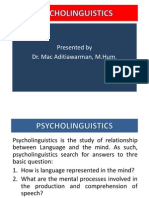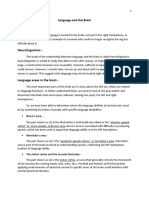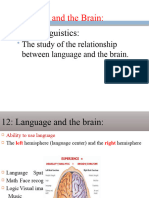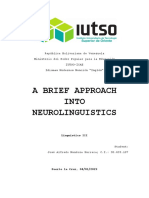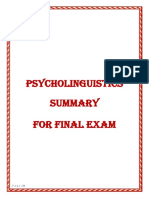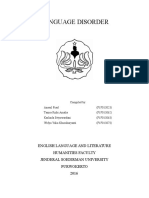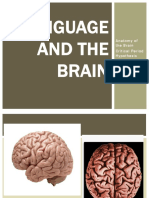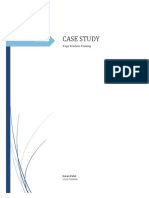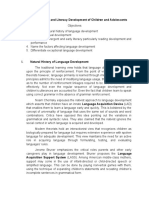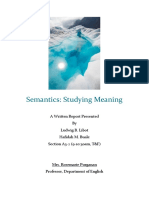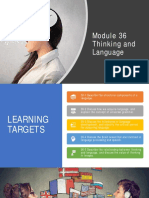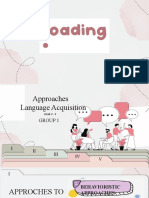0% found this document useful (0 votes)
18 views10 pagesLanguage Faculty - Syntax 1
The document discusses the concept of language faculty, emphasizing its innate nature and neurobiological basis, as well as its universality and creativity in human communication. It outlines key concepts such as innateness, universality, creativity, and the critical period for language acquisition, while also exploring the implications of Noam Chomsky's theories and connectionism in understanding language processing. Additionally, it addresses aphasia, its types, and treatment, and suggests future research directions in the field of language faculty.
Uploaded by
abdullah96romanCopyright
© © All Rights Reserved
We take content rights seriously. If you suspect this is your content, claim it here.
Available Formats
Download as PDF, TXT or read online on Scribd
0% found this document useful (0 votes)
18 views10 pagesLanguage Faculty - Syntax 1
The document discusses the concept of language faculty, emphasizing its innate nature and neurobiological basis, as well as its universality and creativity in human communication. It outlines key concepts such as innateness, universality, creativity, and the critical period for language acquisition, while also exploring the implications of Noam Chomsky's theories and connectionism in understanding language processing. Additionally, it addresses aphasia, its types, and treatment, and suggests future research directions in the field of language faculty.
Uploaded by
abdullah96romanCopyright
© © All Rights Reserved
We take content rights seriously. If you suspect this is your content, claim it here.
Available Formats
Download as PDF, TXT or read online on Scribd
/ 10






